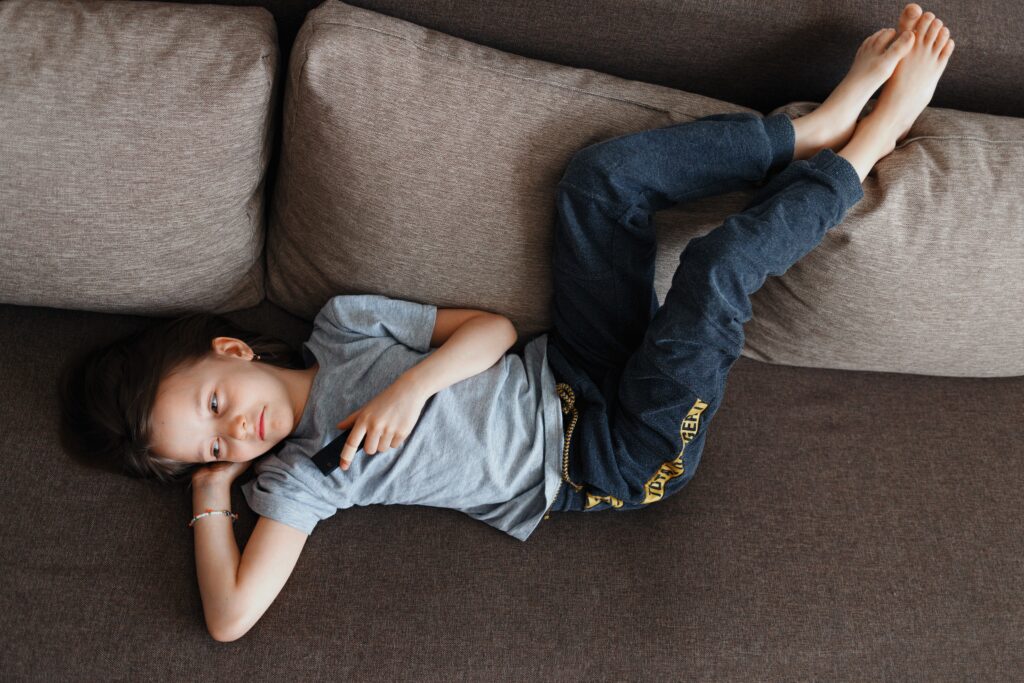
approved and permitted by KHDA

Why Fitting In Feels So Hard for Some Kids?
If you’ve ever looked at your child, avoiding eye contact, whispering instead of speaking, clinging to your leg at a birthday party and thought, “Why is something so small so hard for them?”, you’re not alone.
You may have even found yourself thinking: “Kids these days are too soft.” It’s okay if you did. Many parents feel that way.
But childhood has changed. Today’s child isn’t just worried about fitting in at school. They’re thinking about how they look in a group photo. Whether they were left out of the class WhatsApp chat, or if someone might turn them into a meme the next day.
What may seem like a “small thing” to us feels enormous to them. And those “small things” stack up.
Social anxiety disorder, as psychologists describe it, is a lasting fear of being judged or embarrassed in social settings. It can make kids avoid situations entirely, or experience them while quietly falling apart inside. It’s more than shyness. It’s like walking into every room with a voice in their head whispering, “What if they’re all watching?”
It’s not shyness. It’s survival.
This fear isn’t just a passing mood. It’s in their body. In their breath. In the way they freeze up when it’s their turn to speak in class, or how they replay that one awkward moment over and over at bedtime.
Research from Harvard University found that individuals with social anxiety have increased activity in the amygdala, the brain’s threat detector. It means their brain interprets even ordinary social moments as risky. A raised eyebrow can feel like a spotlight.
The good news? Brains can change. With gentle, repeated exposure to safe, affirming experiences, that internal alarm starts to quiet down. What once felt like a threat becomes just another Tuesday.
What looks like laziness is often fear.

Your child may
⦿ Avoid group activities or birthday parties
⦿ Say they’re “tired” when they’re really anxious
⦿ Stick to one friend and panic when they’re absent
⦿ Seem withdrawn, distracted, or “rude” in social settings
These aren’t signs of weakness or attitude problems. They’re quiet ways of saying, “I don’t feel safe.”
Where it starts.
Social anxiety is rarely caused by one thing. It’s often a quiet storm formed by many.
⦿ A family history of anxiety
⦿ Past experiences of bullying or public embarrassment
⦿ A parenting style that’s either overly critical or overly protective
⦿ Natural sensitivity or perfectionism
⦿ Today’s performance-driven, image-conscious culture
And yes, sometimes, it just is. No trauma. No dramatic cause. Just a brain that feels more exposed in social spaces.
No child wants to be the awkward one. No child chooses to feel like this.
You don’t need to fix it. You just need to stay.
While there’s no perfect script for parenting through social anxiety, here are a few things that can truly support your child.
⦿ Stay curious, not corrective
When your child says, “I don’t want to go,” try asking,
“What feels hard about it?”
That’s not a solution. That’s a door. And it’s enough.
⦿ Celebrate effort, not performance
“You spoke in front of the class? That’s brave.” Even if they didn’t talk much. Even if they struggled to find the right words. They showed up, and that’s big.
⦿ Stretch gently, not forcefully
Suggest small, manageable challenges like ordering food or saying thank you. Little victories build trust in themselves.
⦿ Regulate your tone
Your calmness tells their nervous system “We’re okay.”
⦿ Accept the pace
Social anxiety doesn’t disappear in a week. But it fades when love stays longer than fear.
Science says support matters.

Studies in cognitive behavioral therapy have shown that when children face small, repeated social challenges—with steady, non-judgmental support—their anxiety decreases. They become more willing to try. More capable of managing what once felt unmanageable.
They don’t need you to fix everything. They just need to not face it alone.
In the end, your child may not remember the exact words you said. But they will remember how you made them feel.
